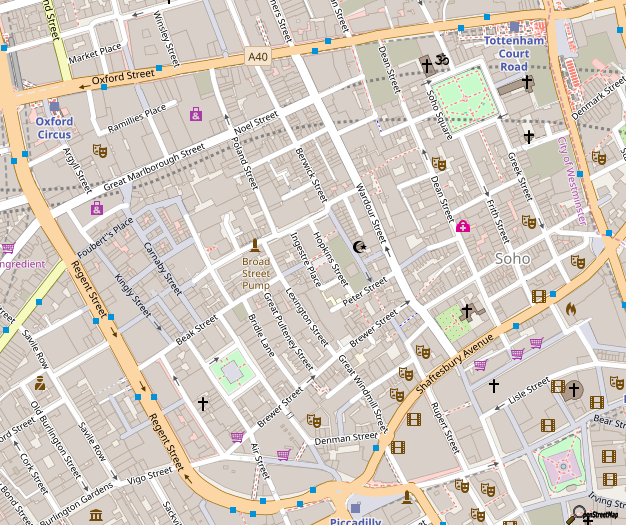
OpenStreetMap studies (and why VGI not equal OSM)
As far as I can tell, Nelson et al. 2006 ‘Towards development of a high quality public domain global roads database‘ and Taylor & Caquard 2006 Cybercartography: Maps and Mapping in the Information Era are the first peer review papers that mention OpenStreetMap. Since then, OpenStreetMap received plenty of academic attention. More ‘conservative’ search engines such as ScienceDirect or Scopus find 286 and 236 peer review papers that mention the project (respectively). The ACM digital library finds 461 papers in the areas that are relevant to computing and electronics, while Microsoft Academic Research find only 112. Google Scholar lists over 9000 (!). Even with the most conservative version from Microsoft, we can see an impact on fields ranging from social science to engineering and physics. So lots to be proud about as a major contribution to knowledge beyond producing maps.
Michael Goodchild, in his 2007 paper that started the research into Volunteered Geographic Information (VGI), mentioned OpenStreetMap (OSM), and since then there is a lot of conflation between OSM and VGI. Some recent papers you can find statements such as ‘OpenstreetMap is considered as one of the most successful and popular VGI projects‘ or ‘the most prominent VGI project OpenStreetMap‘ so at some level, the boundary between the two is being blurred. I’m part of the problem – for example, in the title of my 2010 paper ‘How good is volunteered geographical information? A comparative study of OpenStreetMap and Ordnance Survey datasets‘. However, the more I was thinking about it, the more I am uncomfortable with this equivalence. I would think that the recent line from Neis & Zielstra (2013) is more accurate: ‘One of the most utilized, analyzed and cited VGI-platforms, with an increasing popularity over the past few years, is OpenStreetMap (OSM)‘. I’ll explain why.
Let’s look at the whole area of OpenStreetMap studies. Over the past decade, several types of research papers emerged.
There is a whole set of research projects that use OSM data because it’s easy to use and free to access (in computer vision or even string theory). These studies are not part of ‘OSM studies’ or VGI, as for them, this is just data to be used.
Second, there are studies about OSM data: quality, evolution of objects and other aspects from researchers such as Peter Mooney, Pascal Neis, Alex Zipf and many others.
Thirdly, there are studies that also look at the interactions between the contribution and the data – for example, in trying to infer trustworthiness.
Fourth, there are studies that look at the wider societal aspects of OpenStreetMap, with people like Martin Dodge, Chris Perkins, and Jo Gerlach contributing in interesting discussions.
Finally, there are studies of the social practices in OpenStreetMap as a project, with the work of Yu-Wei Lin, Nama Budhathoki, Manuela Schmidt and others.
[Unfortunately, due to academic practices and publication outlets, a lot of these papers are locked behind paywalls, but this is another issue… ]
In short, this is a significant body of knowledge about the nature of the project, the implications of what it produces, and ways to understand the information that emerge from it. Clearly, we now know that OSM produce good data and know about the patterns of contribution. What is also clear that the patterns are specific to OSM. Because of the importance of OSM to so many applications areas (including illustrative maps in string theory!) these insights are very important. Some of them are expected to be also present in other VGI projects (hence my suggestions for assertions about VGI) but this need to be done carefully, only when there is evidence from other projects that this is the case. In short, we should avoid conflating VGI and OSM.

